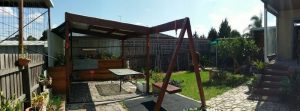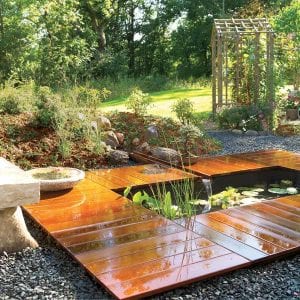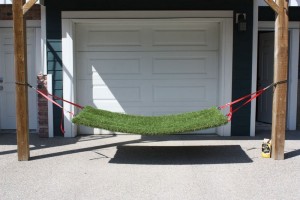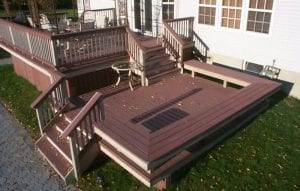Last Updated on June 6, 2024 by teamobn
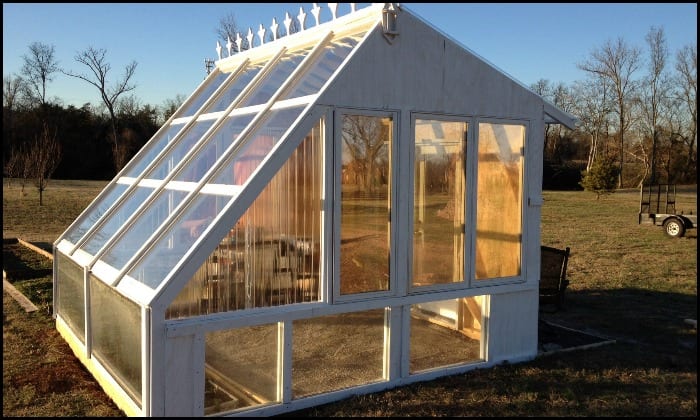
A beautiful DIY greenhouse using old windows!
If you’re looking for a way to add a greenhouse to your property without breaking the bank, a DIY option using old windows is a great solution. Not only can you save money by repurposing materials, but you can also create a unique and eye-catching structure.
When it comes to function, a DIY greenhouse made from old windows can be just as effective as a traditional greenhouse. In fact, you may find that the added character and charm of your DIY greenhouse make it even more enjoyable to use.
So if you’re ready to get your hands dirty and create your own little oasis, read on for everything you need to know about building a DIY greenhouse from old windows.
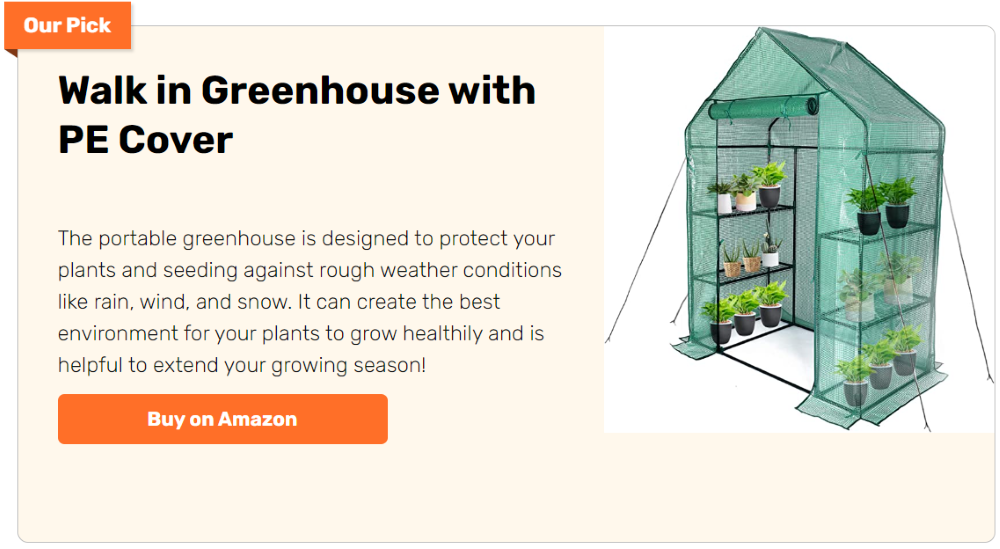
Contents
Building a DIY Greenhouse
If you’re looking to build a DIY greenhouse on a budget, using reclaimed windows is definitely a great way to save on costs. However, it’s important to keep in mind that this usually comes at the expense of aesthetics. In some cases, it may not even serve its purpose well!
When it comes to building a greenhouse, it’s important to weigh all your options and choose the best route for your needs. If you’re looking to save money, using reclaimed windows is a great option. But, if you’re concerned about how it will look or how effective it will be, you may want to consider other options.
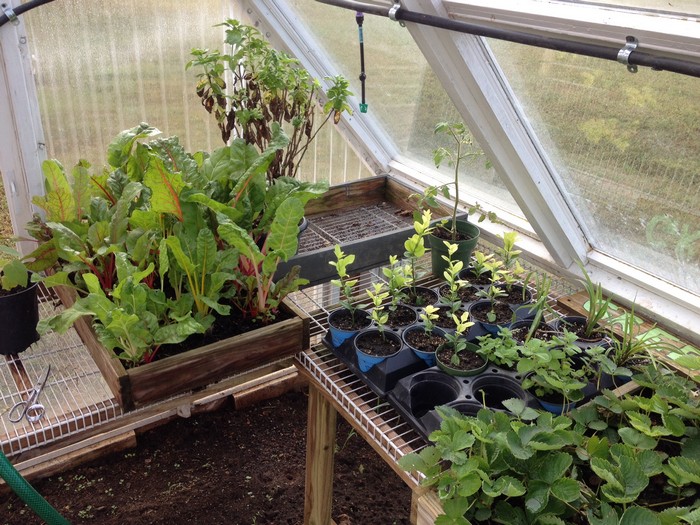
This project, however, proves that with the right amount of planning, your greenhouse made from old windows can be just as gorgeous and functional as a ‘new’ greenhouse. By taking the time to plan out the build, source the materials, and execute the project with care, you can create a beautiful and functional DIY greenhouse that will serve you well for years to come. So if you are particular about aesthetics and function, this DIY project is for you!
This professionally designed greenhouse measures 12′ x 12′ and is 12′ tall at the highest point. It is designed to take advantage of the sun’s heating during winter and to provide shading during summer, making it an ideal choice for year-round growing. With its sturdy construction and easy assembly, this DIY greenhouse is a great way to get started on your journey to self-sufficiency.
The Greenhouse is designed with your plants’ needs in mind. The front window wall is angled at 45 degrees to provide the perfect amount of sunlight, while the polycarbonate ceiling protects against the elements. The east and west windows can be opened or closed as needed to regulate temperature, and the flagstone flooring helps to keep your plants at a comfortable temperature year-round.
In addition to a fan and vent, the unit is also equipped with an electric heater to maintain comfortable temperatures during colder months. An irrigation system was also installed to help keep the air sufficiently humidified.
Indeed, this greenhouse made from old windows is not just beautifully built – it is also properly designed for function! You can check out our gallery for a closer look at the features of this DIY greenhouse. This greenhouse is made with recycled materials and is designed to withstand the elements. With its spacious interior, it’s perfect for starting your plants from seed or for housing your existing plants.
Feeling inspired by this DIY Greenhouse? Then start gathering reclaimed windows now! 🙂
Click on any image to start the lightbox display. Use your Esc key to close the lightbox. ?
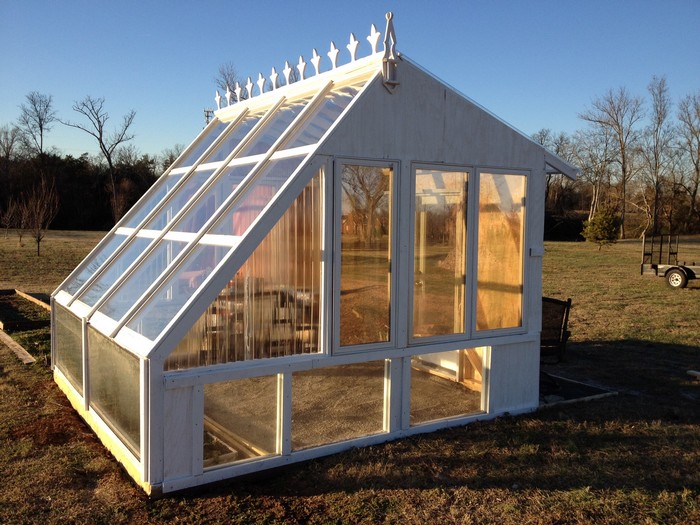
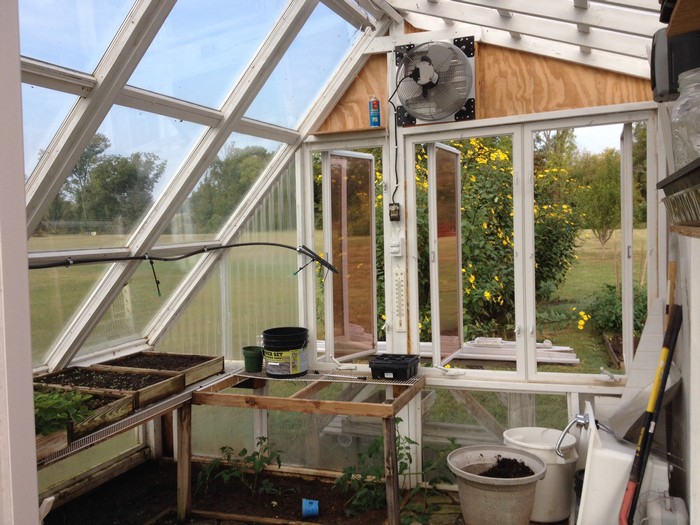
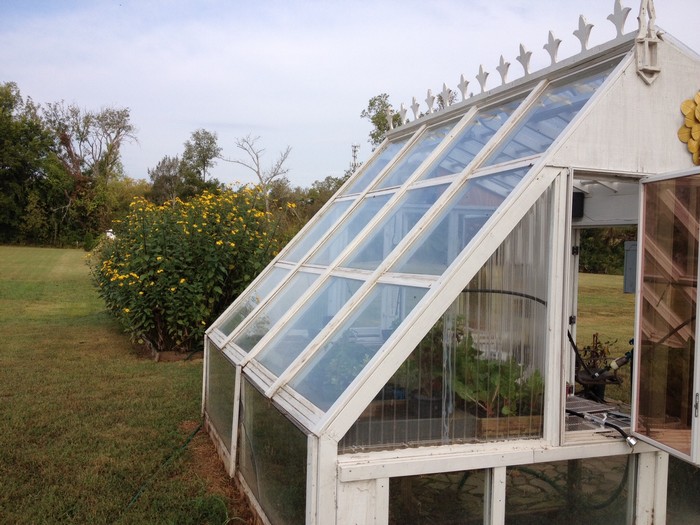
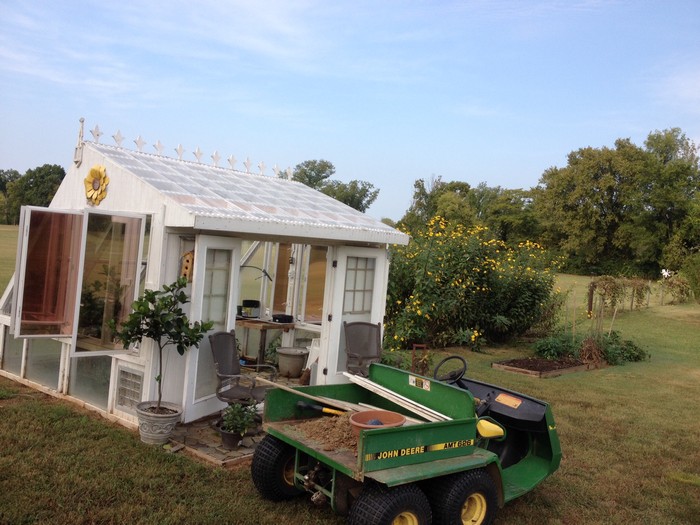
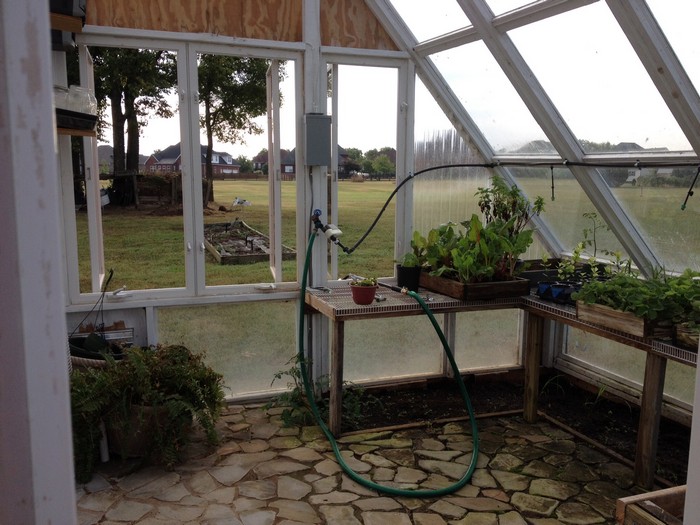

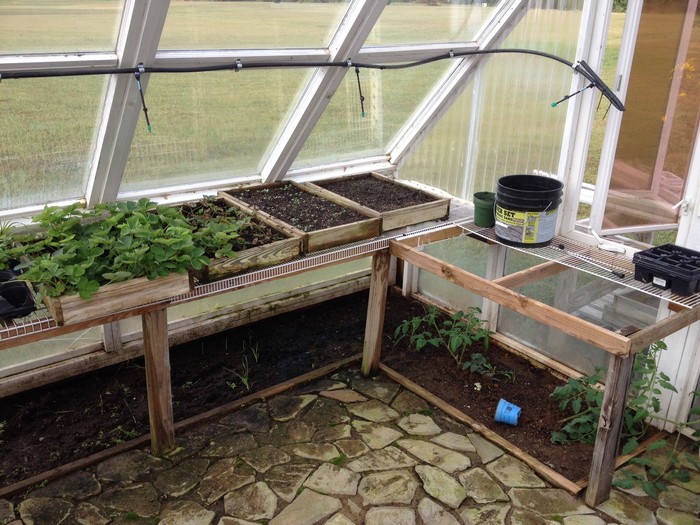
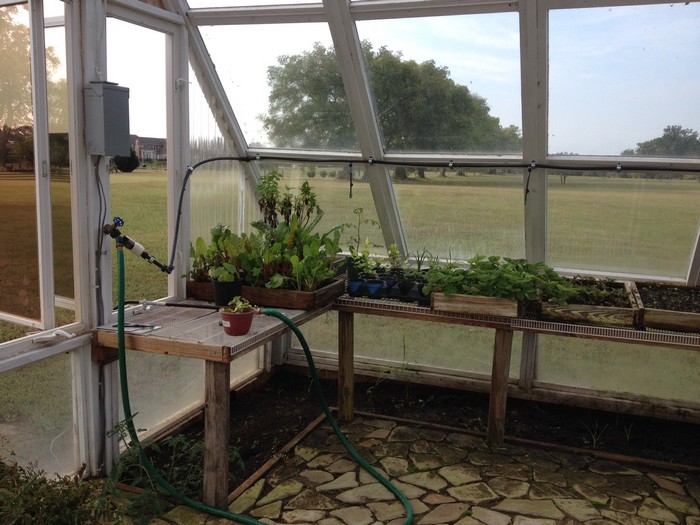
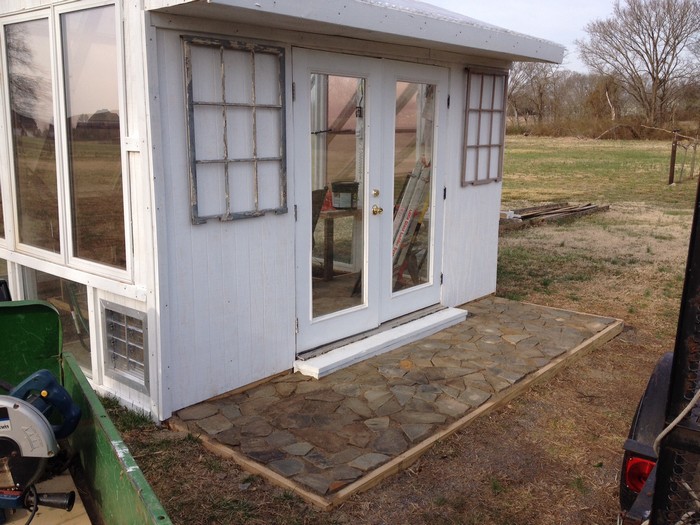
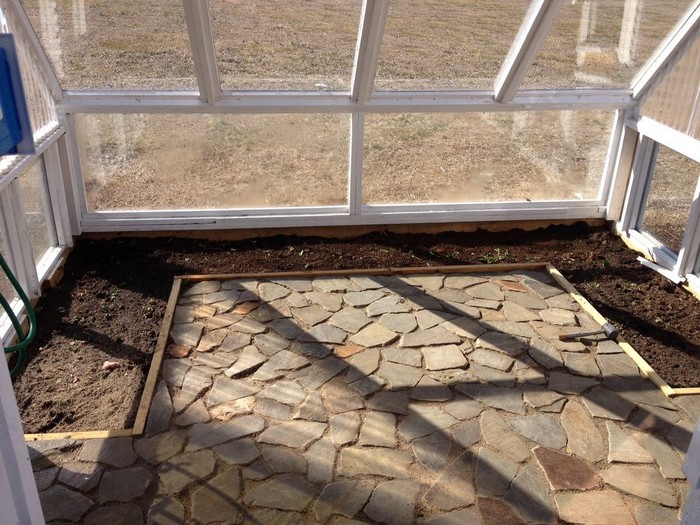
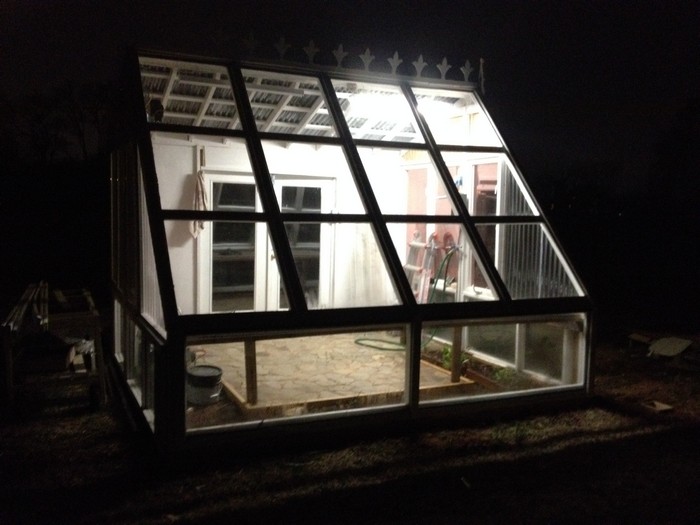

If you’re looking for step-by-step instructions on how this DIY greenhouse was built, Kirklewellen is a great resource. You can find detailed, easy-to-follow instructions.
Optimizing Plant Growing In Your DIY Greenhouse
Optimizing plant growth within your DIY greenhouse is crucial for maximizing the efficiency and yield of your gardening efforts. By strategically arranging the interior and ensuring your plants receive the optimal amount of sunlight and space, you can greatly enhance their health and productivity. Here’s how to best organize your greenhouse for plant growth.
Strategic Layout Design
To optimize space and light exposure in your DIY greenhouse, consider the path of the sun throughout the day. Position taller plants and shelving units on the north side so they don’t cast shadows on shorter plants. Utilize vertical space by installing hanging planters or shelves, which allows for more planting without compromising floor space.
Sunlight Management
The arrangement of windows plays a pivotal role in light distribution. Ensure that your most sun-loving plants receive ample light by placing them near the south-facing windows. For plants requiring less light, position them where the sunlight is more diffused. This strategic placement helps mimic natural growing conditions, which is beneficial for plant health and growth.
Rotation and Accessibility
Regularly rotate your plants to ensure they receive light evenly, which promotes balanced growth and prevents leaning. Design your DIY greenhouse layout to allow easy access to each plant. This not only aids in regular maintenance like watering and pruning but also in monitoring plant health closely, enabling timely interventions when necessary.
Fine-Tuning Your Greenhouse Climate
Keeping a steady climate inside your DIY greenhouse is key for healthy plants. It’s good to keep an eye on both temperature and humidity. Setting up fans can help keep the air fresh and prevent mold and pests from settling in. If your plants like moisture, think about installing a simple misting system to keep the humidity just right.
Nourishing Your Plants Properly
Healthy soil and the right nutrients are crucial for your plants. Choose a top-notch potting mix that’s right for container gardening and adjust your feeding routine to match what your plants need during different stages of their growth. Regular feeding ensures your plants get the right boost at the right times.
Keeping Pests and Disease at Bay
It’s much easier to prevent pests and diseases than to deal with them later. Make it a habit to check your plants often for any signs of trouble. You might even want to bring in some friendly bugs like ladybugs who naturally keep harmful pests away. Keep your greenhouse tidy and remove any sick or dead plants right away to stop any diseases from spreading.
Smart Watering Solutions
Consider setting up a drip irrigation system. This way, your plants get watered evenly and directly at their roots, which saves water and keeps the leaves dry to avoid diseases. Automated systems are great because they ensure your plants get just the right amount of water without any hassle.
Boosting Light with Reflective Surfaces
If some parts of your DIY greenhouse are a bit shady, try lining the walls with something shiny like aluminum foil or reflective paint. This can throw extra light onto your plants, making sure they all get the sunlight they need to grow well.
By implementing these strategies, you can create an optimal growing environment in your DIY greenhouse. This careful planning and organization not only make maintenance easier but also enhance the overall productivity of your gardening efforts.
Legal Considerations and Building Codes
It’s wise to review the local building regulations and regulations before starting your own do-it-yourself greenhouse. The reason this is so important is that it keeps you out of legal hot water later. Here’s how to check that your greenhouse project is compliant legally.
Get to Know Your Local Zoning Laws
Look up your local zoning regulations to start. These regulations mainly define the types of buildings you are allowed to erect on your land and can differ greatly depending on where you live. You might have to obtain a license or ensure that your greenhouse is set back from your property lines.
Check Out Building Codes and Safety Standards
The whole purpose of building codes is to ensure that buildings are strong and safe. These might be particular guidelines for building a greenhouse that can withstand local weather conditions like hurricanes and a lot of snow. It’s important to ensure your greenhouse complies with these safety regulations for reasons more than only following the law.
Figure Out Permit Requirements
A greenhouse is one of the newer structures that requires a construction permit in many locations. Approval of your building designs and inspections both during and after construction may be part of this procedure. Better time and money planning can result from knowing what’s required for a permit in your community.
Consider Environmental Regulations
Environment regulations will also need to be considered if you intend to use a lot of chemicals or water in your greenhouse. These are made to stop pollution of the local animals and water supplies. To maintain your greenhouse environmentally friendly, it is worthwhile to verify the regulations for issues like waste management and water runoff.
Don’t Forget About HOA Rules
Find out whether there are any restrictions on building a greenhouse if your house is a part of a neighbourhood with a Homeowners’ Association (HOA). To maintain everything in your neighbourhood looking uniform, HOA rules can be rather stringent and mandate that you use particular materials or follow a particular design.
Make sure your greenhouse project goes without a hitch by attending to these legal aspects up front. The first effort is a little laborious, but it keeps your project on course and out of legal hot water.
Conclusion
Constructing your own greenhouse can be a fulfilling endeavor that boosts your gardening skills and brings a distinctive charm to your property. By carefully considering the necessary steps and following local regulations, you can establish a space that supports the growth of plants throughout the year. Come and experience the joy of connecting with nature and reaping the rewards of your hard work in a peaceful and lush sanctuary.


